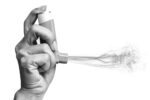Lung Ultrasound Can Help Diagnose Children With Acute Chest Syndrome

A lung ultrasound can aid in accurately diagnosing a serious respiratory complication called acute chest syndrome in children with sickle cell disease (SCD), a study reported.
The study, “Point-of-care lung ultrasound is more reliable than chest X-ray for ruling out acute chest syndrome in sickle cell pediatric patients: A prospective study,” was published in the journal Pediatric Blood and Cancer.
Acute chest syndrome (ACS), which is characterized by lung damage accompanied by symptoms like pain, fever, or cough, is a leading cause of hospitalization and death for people with SCD.
Although its diagnostic criteria are well-defined, actually diagnosing ACS in a real-world setting can be challenging.
The standard way to detect ACS-related lung damage is through a chest X-ray. But interpreting these images can be subjective and dependent on a clinician, the researchers noted, and this type of imaging is often not available at local healthcare centers in many parts of the world.
Ultrasound is an imaging technique that uses sound waves to visualize structures inside the body. Lung ultrasound is a well-established way to diagnose pneumonia.
A team of researchers in Brazil and Canada tested whether lung ultrasound might be a useful in detecting ACS in children with SCD.
At a center in Brazil from 2016 to 2018, SCD patients with suspected acute chest syndrome underwent chest X-ray and lung ultrasound within a few hours of each other. These tests were done by experts trained in interpreting the images.
In total, 80 suspected ACS episodes in 39 children were evaluated. Children ranged in age from infants to teenagers, and about two-thirds were male.
Based on initial chest X-ray imaging, 14 of the cases had lung damage indicative of ACS. In all these cases, lung ultrasound consistently identified abnormalities. Lung ultrasound also identified ACS-like changes in 22 cases with normal images on the initial chest X-ray.
By the time children were discharged from the hospital, 21 cases had recorded diagnoses of ACS, either based on an initial chest X-ray or through subsequent X-rays that confirmed the diagnosis.
Statistical analyses illustrated that, comparing the initial chest X-ray with the lung ultrasound, the sensitivity (true-positive rate) was higher for ultrasound (100% vs. 62%), whereas the specificity (true-negative rate) was higher for chest X-ray (76% vs. 100%).
The overall positive predictive value — the percentage of patients who tested positive and actually did have ACS — was 60% for lung ultrasound, and 100% for the initial lung X-ray.
The negative predictive value for lung ultrasound was 100%. In other words, every child who did not have signs of ACS on lung ultrasound was confirmed to not have it by the time they were discharged. By comparison, the negative predictive value for the initial chest X-ray was 88%.
Overall, this study suggests that lung ultrasound is superior to chest X-ray at diagnosing ACS-like lung damage in children, the researchers concluded. They noted that lung ultrasound is particularly “reliable in ruling out ACS, given its high negative predictive value.”
Researchers also noted that ultrasound offers other advantages compared with chest X-rays beyond diagnosis. For instance, ultrasound does not require exposing patients to radiation and can be rapidly performed, usually in less than 15 minutes.







